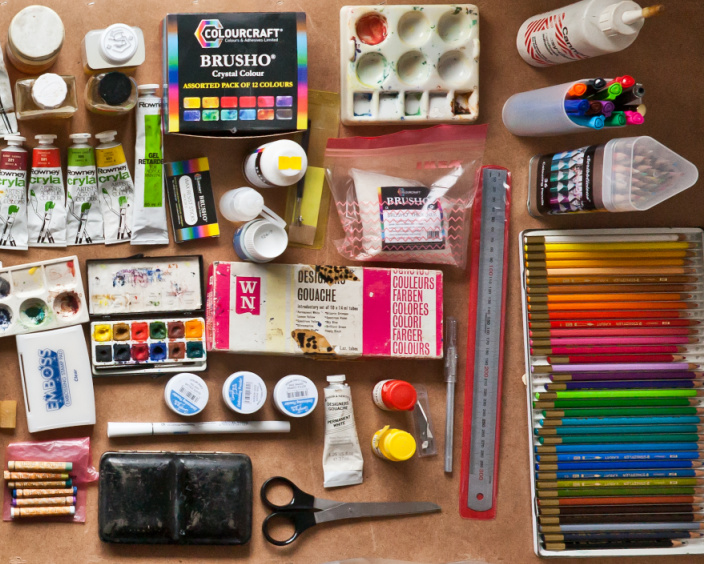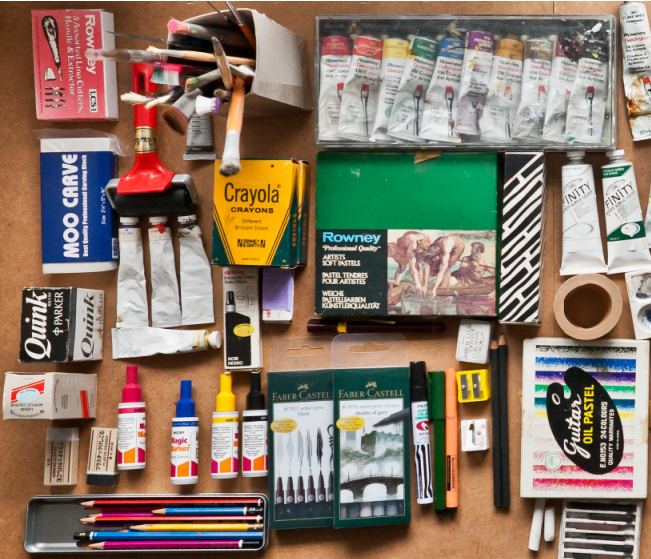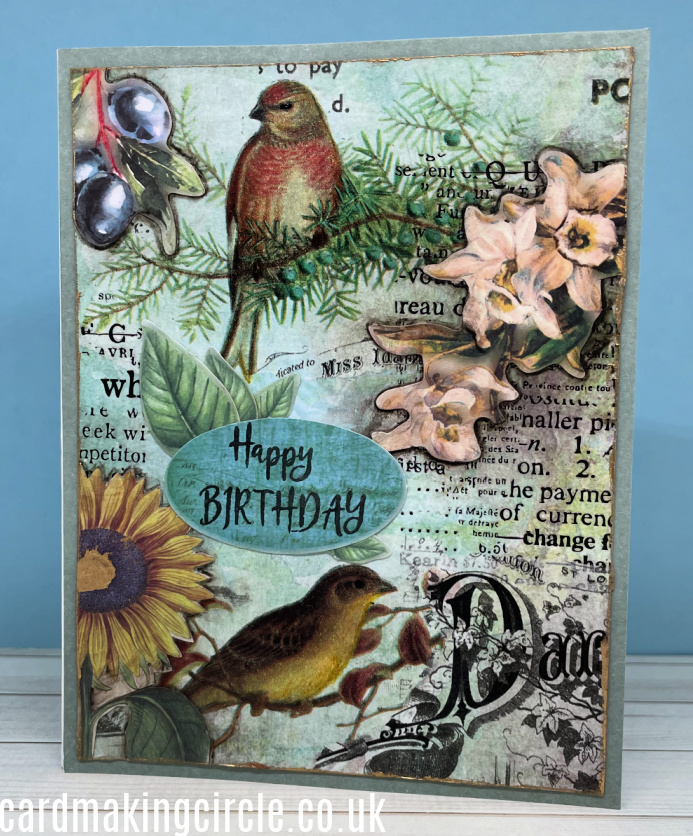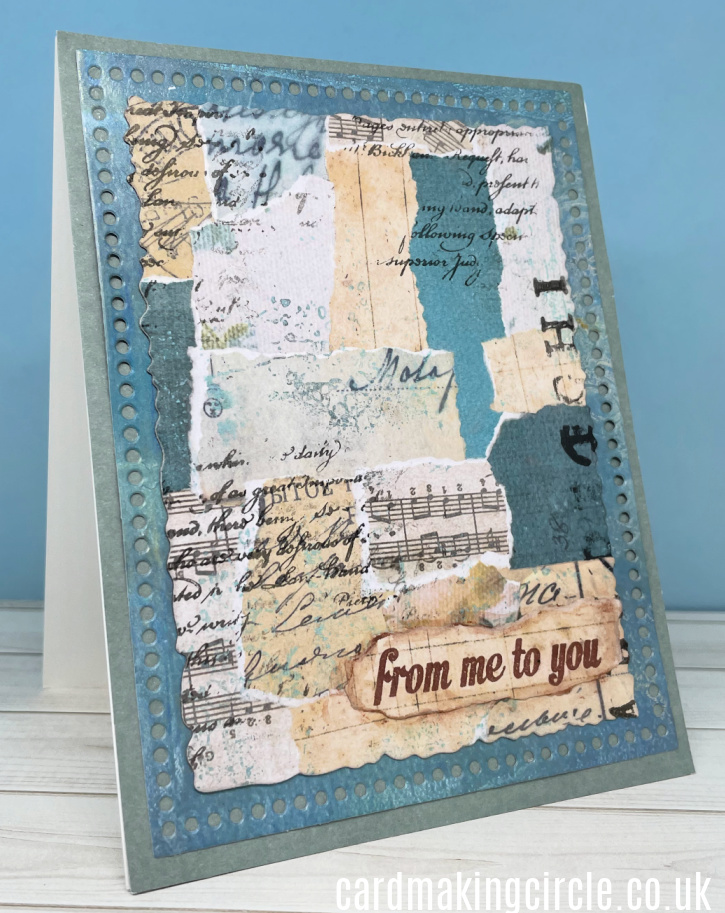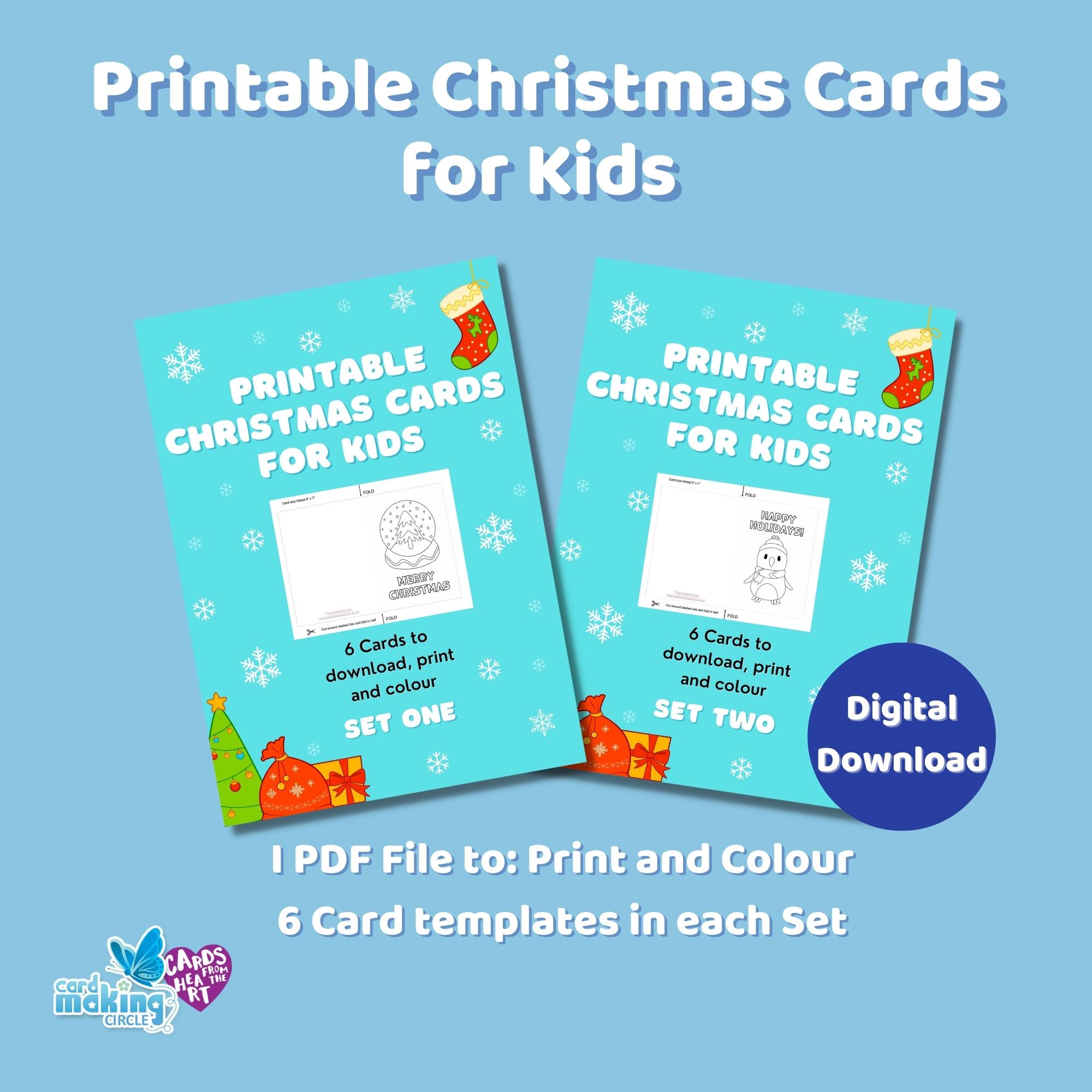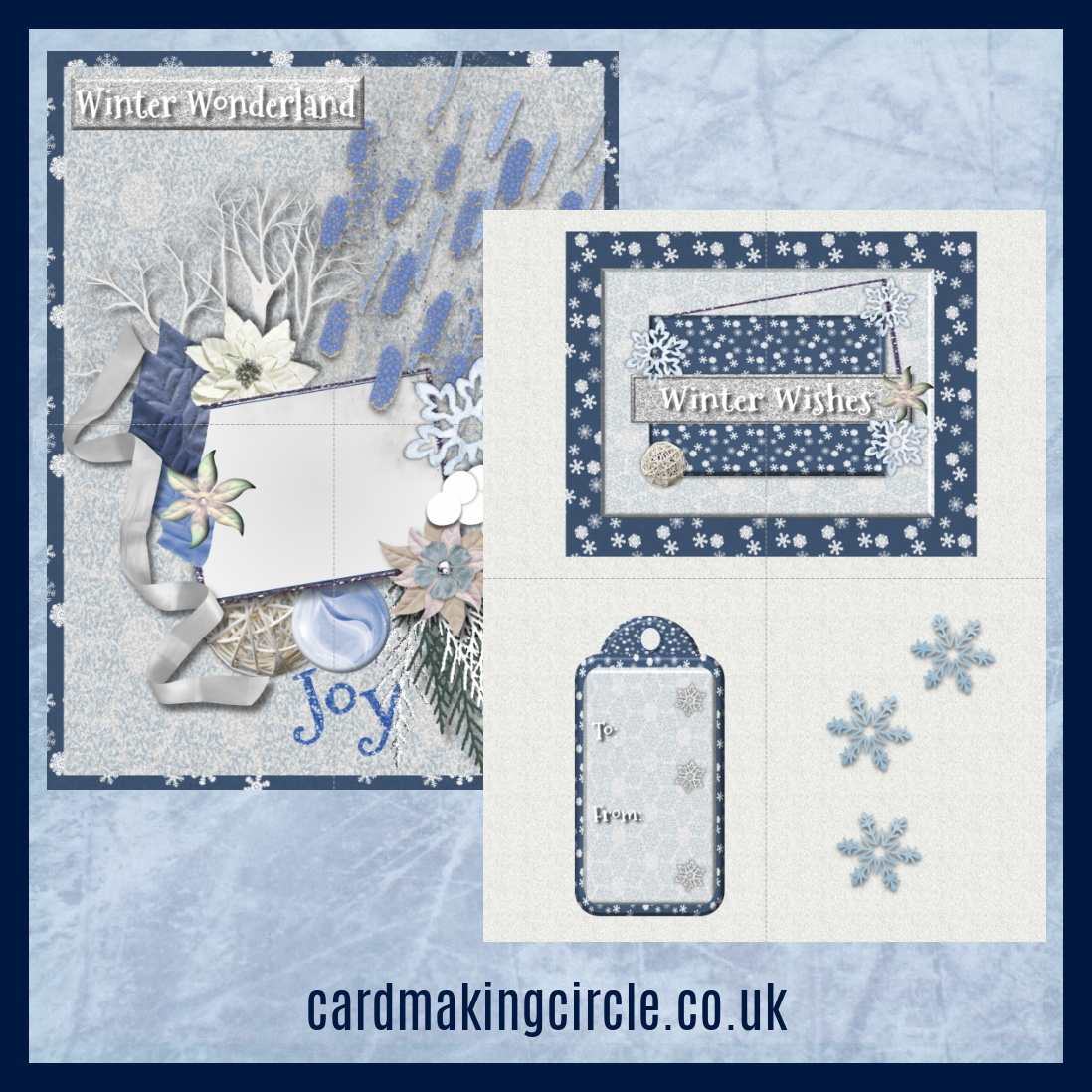Sign up TODAY for Card Making News! Learn More >
- Home
- Card Making Techniques
- Mixed Media Techniques
Mixed Media Techniques
Whether you're just starting with card making or you're a seasoned pro using mixed media techniques will help you create unique and stunning cards.
But wait, what is mixed media?
Mixed media involves combining different art mediums to create a unique piece of artwork. In our case, a card.
The beauty of it is there's no strict rule. From watercolours to glitters, acrylic, and inks...everything's fair play!
It can include using paints, inks, sprays, stamps, stencils, fabric, ribbons or even buttons.
The process involves layering these different elements to create depth and interest.
For instance, you might start with a base of card stock. Add a layer of paint or ink. Use stencils or stamps to add patterns. Then embellish with fabric or ribbon.
The key is to experiment with combining different textures and materials.
Materials
When it comes to materials, the choices are vast.
You can use pretty much anything that sparks your imagination. It could be basic art supplies or unconventional objects.
Traditional materials like acrylic paints, watercolours, and pastels can work wonders. But don't be afraid to think outside the box.
How about some fabric scraps, old book pages, or ribbon? These can be fantastic to use for a collage on your card.
If you are worried about budget? Don't be. The best part about mixed media is you can scale it up or down according to your preference. So why not gather the stuff at home first? You'll be surprised how much you can create with everyday items.
Look in your kitchen cupboards and see what can be used.....coffee grounds, tea bags, or spices all unique textures and colours.
Or gather natural elements like leaves, flowers, or feathers. This will bring an organic touch to your artwork.
Texture
Just like materials, there's an plenty of options available.
You will need traditional art tools like paintbrushes, palette knives, and sponges. As they allow for precise strokes, expressive textures, and smooth blending.
But think about incorporating unconventional tools as well.
Have you ever tried using a credit card or an old toothbrush to create interesting textures? How about using a piece of corrugated cardboard or bubble wrap to add unique patterns to your layer?
The possibilities are endless when you start exploring unusual tools. Don't overlook the power of everyday objects around you such as your kitchen utensils.
Experiment!
Layering
The foundation of card making with mixed media is the card stock.
Choose one that's sturdy enough to handle multiple layers of mediums. Watercolour paper or heavyweight card stock will do the trick.
Layering involves adding multiple layers of different materials to create depth and dimension.
The next step is one of my favourite card making techniques.....
Creating a background!
It sets the mood for your card and provides the great starting point for your layering and collaging.
Apply a base layer of paint or collage paper to establish the overall colour scheme or theme of your card.
Once your base layer is dry, you can start building up the layers.
Consider using torn pieces of textured paper or fabric and glue them onto the surface.
By overlapping various materials you can create interesting visual contrasts and patterns.
Don't be afraid to incorporate different kinds of textures into your layers.
For example, add crumpled tissue paper. Or use a stencil to add texture paste. This creates raised patterns.
Varying the texture will add depth and tactile interest to your card.
Collaging
Another technique closely related to layering is collaging.
Collage involves combining different materials. These may include paper cutouts or photographs.
Start by gathering your materials.
Anything from old newspapers to personal photographs or even bits of fabric.
Begin by arranging your materials on your card front.
Play around with the arrangement until you find something you like.
When happy, glue the materials to the surface using a gel medium or a strong liquid glue.
Add other elements such as paint or ink to enhance the design. Spatters are a popular choice.
By combining layering and collaging techniques you will create a unique design. The only limit is your imagination!
Creating a Collage Master Board
A master board collage is a large collaged piece. You can cut it into smaller pieces to use for....
- Card fronts
- ATC's
- Journal pages
- Postcards
Creating a collage master board for your mixed media cards is a fun and creative activity.
You will need the following materials.....
- Scrap papers - wrapping paper, book pages, magazines, newspapers, tissue paper, sewing patterns. Try to include a range of textures, colours and patterns.
- Watercolours, acrylic paints, inks, and other colouring tools.
- Stencils, bubble wrap, corrugated cardboard and other mark making items
- Adhesives (glue stick, Mod Podge or Matt Medium)
- Old paintbrushes/palette knife for spreading paint or glue.
- A plastic sheet or old newspaper to protect your work surface.
Step by Step
Step One
Paint your papers. Use watercolours, acrylic paints, and inks to add colour to your papers. You can paint them in solid colours or in patterns.
Experiment with different techniques - try splatter painting or creating watercolour washes.
Use stencils and other items such as bubble wrap or bottle tops to introduce more pattern and variety.
Remember, no two pieces of your collage paper should be the same.
Allow the papers to dry.
Step Two
Add textures to your papers. You could crumple, fold, or tear the paper.
Layer tissues, newspaper or paint over them.
Allow to dry.
Step Three
Cut or tear your painted papers into smaller pieces. Start pasting them onto a large base paper, overlapping the edges.
You can arrange these pieces in any way you like - randomly or in a specific pattern.
The base paper is your master board.
Step Four
Seal your master board. Once you're happy with your arrangement seal with Mod Podge or Matt Medium. This will bind the pieces together and give the surface a finished and shiny look.
Allow to dry.
Step Five
Cut your master sheet collage paper down to card size pieces.
Glue them onto your blank greeting card bases or use to create ATC's.
Add your own stamped images, embellishments etc to create a unique, mixed media greeting card.
Remember, the key to a great collage is variety and creativity.
These two videos on You Tube show two different ways to create a collage master board....
Summary of Mixed Media Techniques
Here's a summary of the main aspects of mixed media techniques.....
- Play with texture. Experiment. Mix gritty elements to create interesting textures on your card. Or use various papers, fabric scraps, or even leaves.
- Combine wet and dry Media. Mixing wet and dry mediums can yield incredible results. Try adding coloured pencils onto of watercolour or acrylic paint.
- Add collage. Introduce a variety of textures, patterns, and colours into your art with collage pieces.
- Use unconventional materials. Don't limit yourself to traditional art supplies. Find inspiration in everyday objects. Make your card unique.
- Layer, Layer, Layer. The key elements of mixed media art is layering. Build up layers of different materials to add depth to your card.
And finally....
Don't panic if half way through, everything starts to look chaotic. That's part of the fun!
Mixed media can create a big mess as you spread all your materials and tools over your work top. It can challenge those of us with a perfectionist streak.
Try to let go and don't be afraid of experimenting these new techniques.
Just let your imagination run wild and spread joy. One layer at a time!
See Also....
Mixed Media Greeting Cards for mixed media card ideas.
These books from Amazon are excellent.....
101 More Mixed Media Techniques
- Home
- Card Making Techniques
- Mixed Media Techniques
